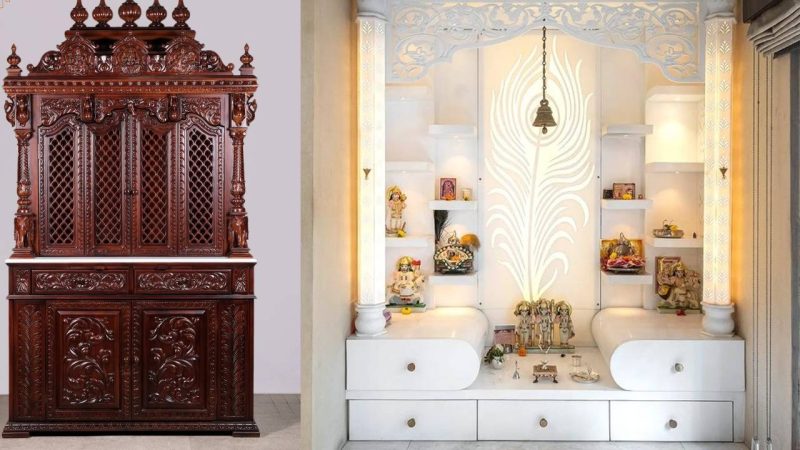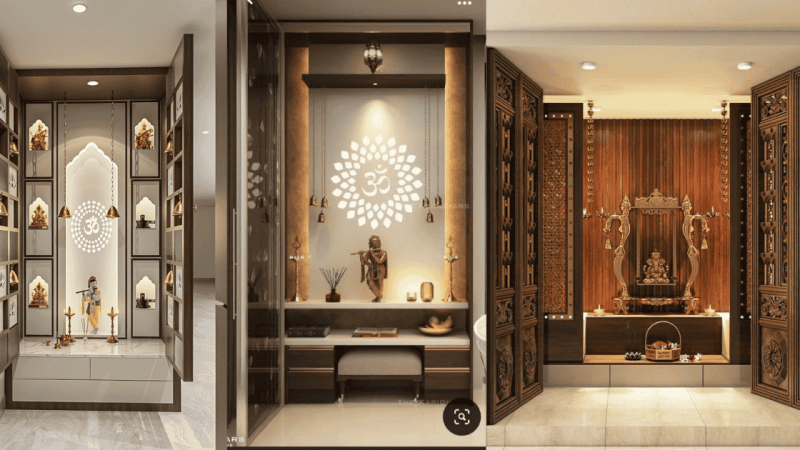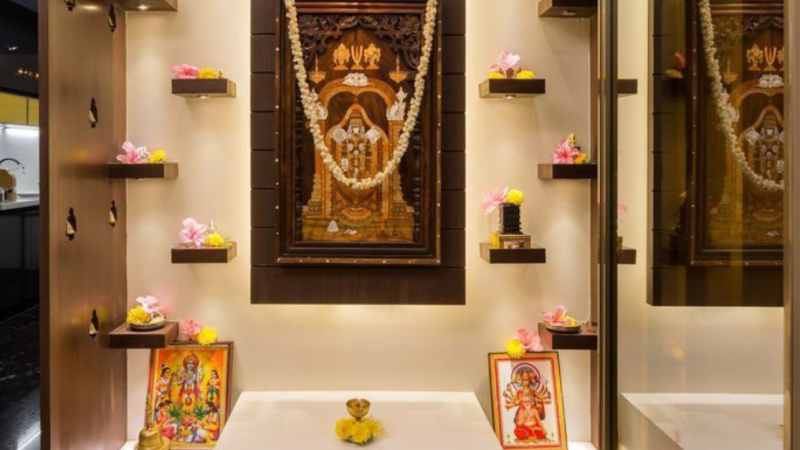Wall-Mounted vs. Standalone Pooja Units: Pros and Cons

Creating a dedicated space for worship in your home is essential for fostering spiritual well-being and maintaining a serene environment. Choosing between a wall-mounted pooja mandir and a standalone pooja mandir is a significant decision that depends on various factors, including space availability, aesthetic preferences, and functional requirements. This article explores the advantages and disadvantages of both wall-mounted and standalone pooja units to help you make an informed choice.
Wall-Mounted Pooja Mandirs
Wall-mounted pooja mandirs are affixed directly to the wall, offering a modern and space-saving solution for home worship.
Pros:
-
Space Efficiency: Ideal for compact spaces, wall-mounted mandirs utilize vertical space, freeing up the floor area. This design is particularly beneficial in apartments or smaller homes where space is at a premium.
-
Modern Aesthetics: These mandirs provide a sleek and contemporary look, seamlessly blending with modern interior designs. Their elevated position can serve as a focal point in the room, adding to the overall decor.
-
Easy Cleaning: With the unit off the floor, cleaning the area beneath becomes hassle-free, ensuring better hygiene and maintenance.
-
Safety: Mounting the mandir on the wall keeps it out of reach of pets and small children, protecting both the sacred items and your loved ones.
Cons:
-
Limited Storage: Due to their compact size, wall-mounted mandirs often lack sufficient storage space for pooja essentials like incense sticks, oils, and holy books.
-
Installation Requirements: Proper installation is crucial to ensure stability, often necessitating professional assistance. Additionally, the wall must be strong enough to support the mandir’s weight.
-
Weight Constraints: There are limitations on the weight these units can bear, which may restrict the number of idols and accessories you can place.
Standalone Pooja Mandirs
Standalone pooja rooms are freestanding units that rest on the floor, offering a traditional and substantial presence in your home.
Pros:
-
Ample Storage: These mandirs typically come with built-in cabinets and drawers, providing ample space to store all pooja-related items neatly.
-
Stability and Durability: Floor-rested mandirs are sturdy and can support heavier idols and accessories without concern.
-
Traditional Appeal: They often feature intricate designs and carvings, adding a touch of traditional elegance to your home decor.
-
Mobility: Unlike wall-mounted units, standalone mandirs can be relocated within the home as needed, offering flexibility in placement.
Cons:
-
Space Consumption: Requiring dedicated floor space, these mandirs may not be suitable for smaller homes or rooms with limited space.
-
Cleaning Challenges: Cleaning around and under the unit can be more cumbersome compared to wall-mounted options.
-
Higher Cost: Due to their size and craftsmanship, standalone mandirs can be more expensive and may require a more significant investment.
Pooja Room Door Designs: Traditional vs. Contemporary Options
Making the Right Choice
When deciding between a wall-mounted and a standalone pooja mandir, consider the following factors:
-
Space Availability: Assess the available space in your home. Wall-mounted mandirs are ideal for smaller areas, while standalone units require more room.
-
Aesthetic Preference: Determine whether a modern or traditional look aligns with your home decor and personal taste.
-
Functional Needs: Consider the amount of storage you need for pooja items and whether you prefer a fixed or movable unit.
-
Budget: Evaluate your budget, as standalone mandirs often involve a higher cost due to their size and intricate designs.
By carefully evaluating these aspects, you can select a pooja mandir that not only complements your home but also enhances your spiritual practices.



